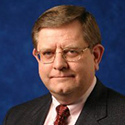By Jeff Brumley
Most any pastor of a congregation located near a megachurch has heard suggestions of how to emulate the worship, technology or hospitality ministry of a fast-growing neighbor.
“Yes, I get those,” said Shaun King, senior pastor at Johns Creek Baptist Church in Atlanta.
The Cooperative Baptist congregation is located within 10 miles or less of two satellite campuses of North Point Community Church, the multisite megachurch led by evangelist Andy Stanley.
King said it’s only natural that members or visitors to Johns Creek suggest the Baptist congregation adopt some of the state-of-the-art practices that push North Point weekly attendance to 36,000.

“Our members are neighbors with their members … and rubbing shoulders and learning from each other,” King said.
Recent and long-time research have consistently shown that megachurches have much — including incredible attendance growth figures — to be envied.
But congregational health experts say churches jealous of such trends need to tread carefully in copying the styles of worship and ministry that contribute to phenomenal attendance figures.
Continued growth
The Hartford Institute for Religion Research earlier this month released a “2015 Megachurch Report” that discovered megachurches — congregations of 2,000 members or more — are growing at incredible rates.
Very large megachurches — those with attendance of 30,000 or more — reported a median growth rate of 26 percent during a five-year period, the report said. That’s more than 5 percent growth in attendance annually.
 Nearly half of megachurches average five services per weekend and 62 percent of those services are held at multiple locations.
Nearly half of megachurches average five services per weekend and 62 percent of those services are held at multiple locations.
“Overall, the worship at these very large churches continue to be contemporary, highly technological and is self-described as inspirational, joyful, nurturing of faith, thought-provoking, and filled with the sense of God’s presence,” the report said.
‘Willingness to change’
A common response in smaller churches is to want to adopt some or all of the practices of megachurches to reverse downward trends in attendance. But the success of megachurches does not always rest on outward signs such as worship styles or having charismatic leadership.
It’s actually something much riskier than that, said Scott Thumma, a sociologist of religion, director of the Hartford Institute for Religion Research and co-author of the study released in early December.
“Part of the success of the megachurch is its willingness to change and adopt and alter what you are doing,” Thumma said. “It really helps the church keep growing and developing.”
The demographics of the megachurch also drive its growth, he said. Those with younger pastors seem to be more flexible and grow faster, he said. However, those with older memberships have higher rates of member commitment.
“You want to be always reinventing yourself so you can draw from both sides of that dynamic,” Thumma said.

But there are some facets about megachurch attendance that smaller churches should not try to copy: turnover and infrequent attendance among members.
Megachurches are less likely than smaller churches to have regular attenders, Thumma said. Smaller churches also have more long-term members.
“As many are coming in the front door as going out the backdoor” of a megachurch, Thumma said.
And megachurches, just like everyone else, are struggling to attract and keep young adults, according to the Hartford report.
Debunking misconceptions
And that’s a fact that didn’t escape George Bullard, a South Carolina-based church consultant.
The Hartford report contains much to allay the concerns of smaller churches and to keep them from envying those much larger congregations.
“Non-megachurch pastors and their churches often have misconceptions about megachurch,” said Bullard, president of the Columbia Partnership.

“I want to demythologize those. I want them to see megachurches are having some of the same challenges in reaching young adults, as an example,” he said.
Bullard said he has contacted Thumma, who has agreed to be the guest during the Jan. 14 FaithSoaring Churches Learning Community conference call.
“Non-megachurch pastors and their churches often feel they must compete with megachurches,” Bullard said. “I want to emphasize the need to see their own unique mission and vision and for them not to be copycats of megachurches.”
Avoiding temptation to copy
That’s an argument Bullard and other church consultants counter with a major principle behind successful church development: to be true to their own callings.
“The best approach is not to copy what another church does, but to determine what are your own strengths and calling and community context,” said David Hull, southeast coordinator for the Center for Healthy Churches.
That’s easily forgotten when a megachurch, or any local church, is enjoying rapid growth, Hull said.
“Other churches see that and sometimes the temptation is to say, ‘let’s do what they are doing.’”

The problem is, that approach likely ignores the smaller congregation’s core strengths, he said.
“That’s grafting onto something that may not be who you really are.”
In fact, those are the same principles that make megachurches successful. In 2006, the Hartford Institute published 10 suggestions titled “What Can My Church Learn from a Megachurch?”
Those 10 tips include:
• Don’t strive for size; strive to serve God.
• Know your strengths and put them to work.
• Create participants, not members.
• Whatever you do, do it with excellence.
Hull said he would encourage any church to embrace those suggestions. And it’s what he does as a consultant.
“I try to lead our churches to do every one of those things,” he said.
And it is similar principles that help Johns Creek Baptist stay focused when proposals arise to emulate megachurch programs and ministries, King said.
“We stay on course by remembering who we are trying to be in our own unique space.”
